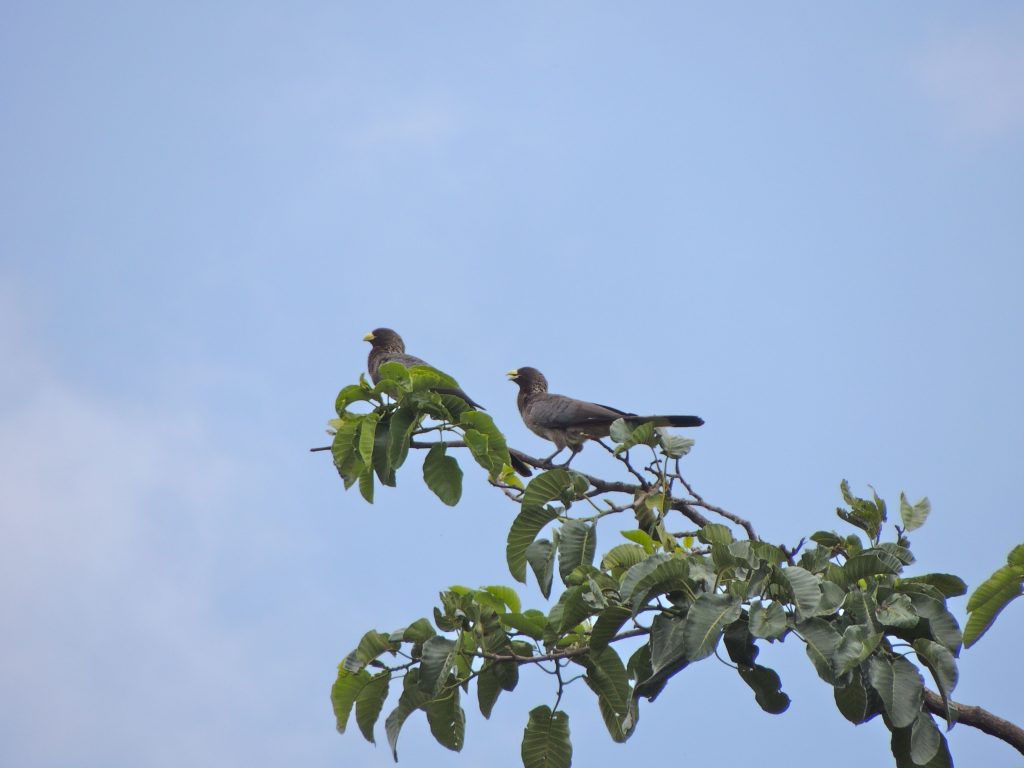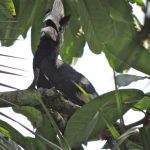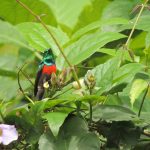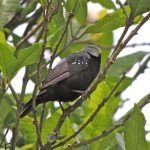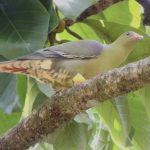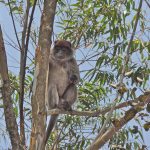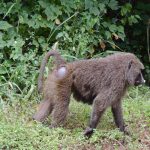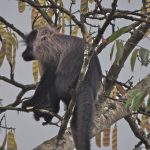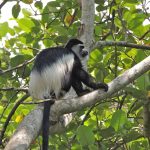January 28 2017. Bigodi Wetland, Uganda. Just south of Kibale National Park (one of Ugandan’s prize tourist attractions) lies a small but well publicized and visited wetland. The Bigodi Wetland is just a marsh, a large expanse of lowland with a river meandering through and choked with papyrus sedge. In many settings, particularly in a country with few regulations as to land use, such an area might well be cultivated, planted with sorghum or yam and threaded with drainage ditches. Perhaps it turned out to be undrainable but whatever the reason the community had another and better idea, this wetland is one of western Uganda’s best places to see birds and has become a tourist attraction in its own right.
My guide Robert had arranged for us to be shown around by Gerald a top-notch specialist bird guide on what turned out to be a four kilometer walk. I wasn’t aware that it would be quite that long and I started to drag towards the end. But no matter, the circuit took us through a variety of habitats and each seems to deal some startling sights, a couple of turacos to begin with.
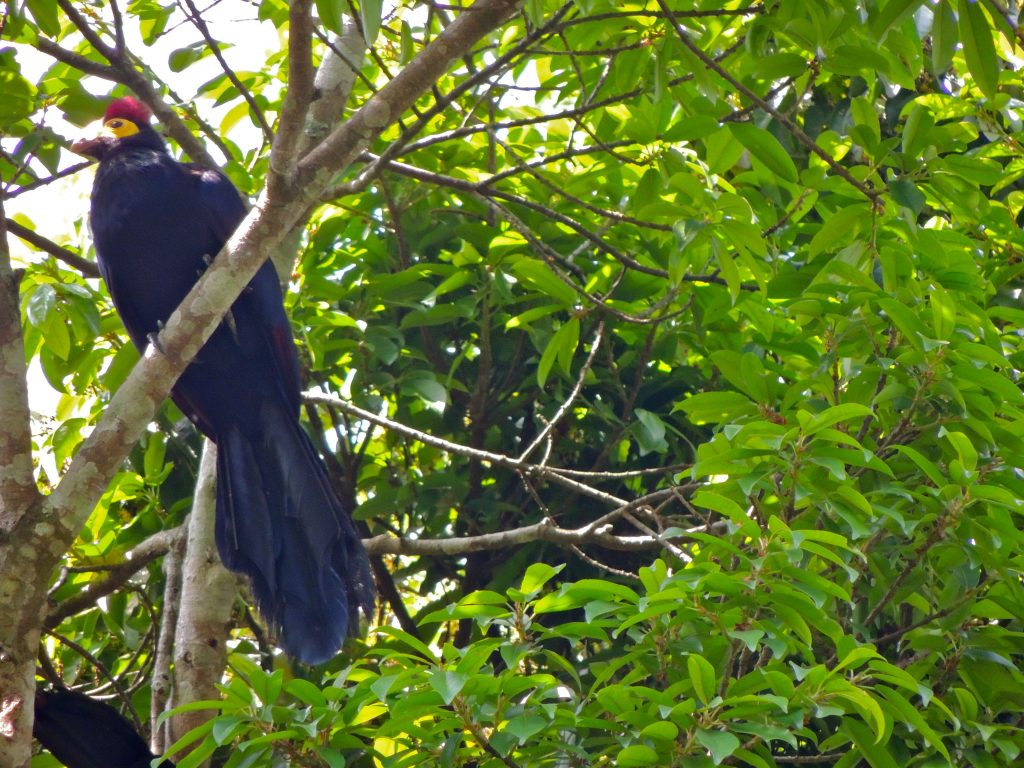
Turacos are a family of large arboreal birds, rather like overgrown pigeons. I’d seen both Ross’ and Great Blue Turacos on my first visit to Uganda a year ago and here they were again! Turacos in general are big and colourful, usually blue or green. The Ross’s looks like a large blue chicken with a surprised expression and when it flies, if you can overcome your gasps of disbelief, you realize it has long crimson-emblazoned wings.
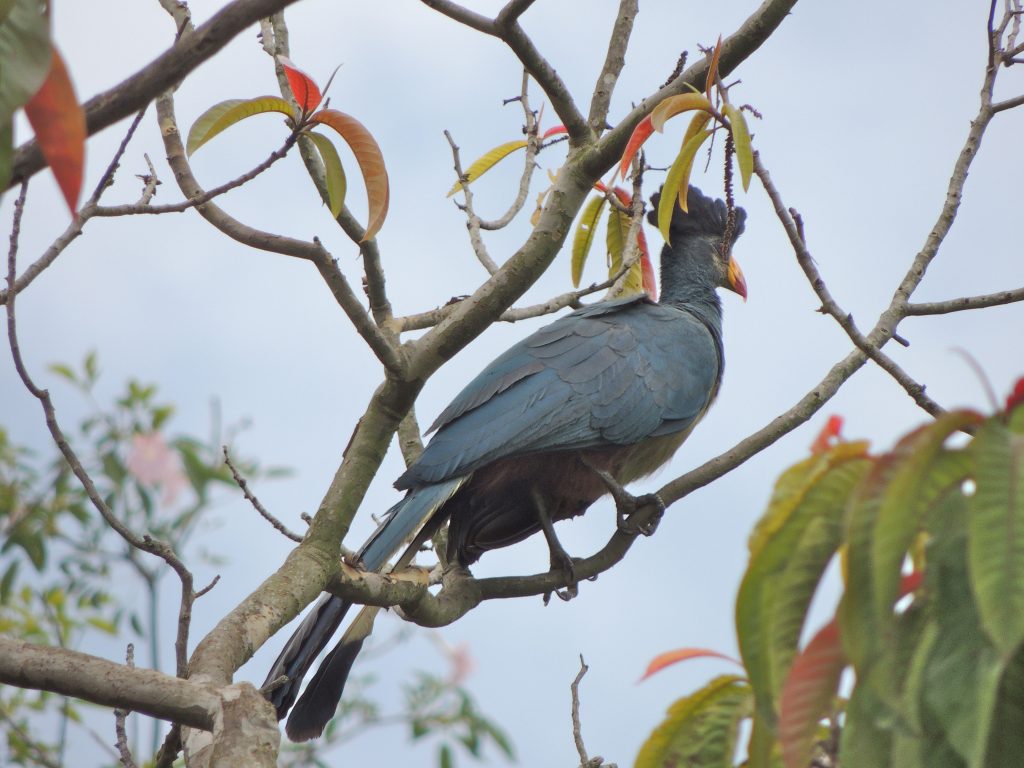
Last year I watched a Great Blue Turaco in a nearby treetop and it stayed around clucking in mild disapproval while I took several photos and a brief movie.
But turacos were just a start to a walk of startling variety. The bird species list included some nearly-familiars like Olive-bellied Sunbird, Brown-eared Woodpecker, African Green Pigeon, Grey-headed Negrofinch, and White-throated Bee Eaters, all of which I noted as plausible if not immediately familiar. And then there were others with exotic sounding names like Grey-backed Cameroptera, Brown Iladopsis, Western Nicator and Hairy-breasted Barbet, not one of them would I know if I saw again. Although, for what it’s worth, a Double-toothed Barbet stationed itself outside the door of my cottage that evening – and it is a memorable bird.
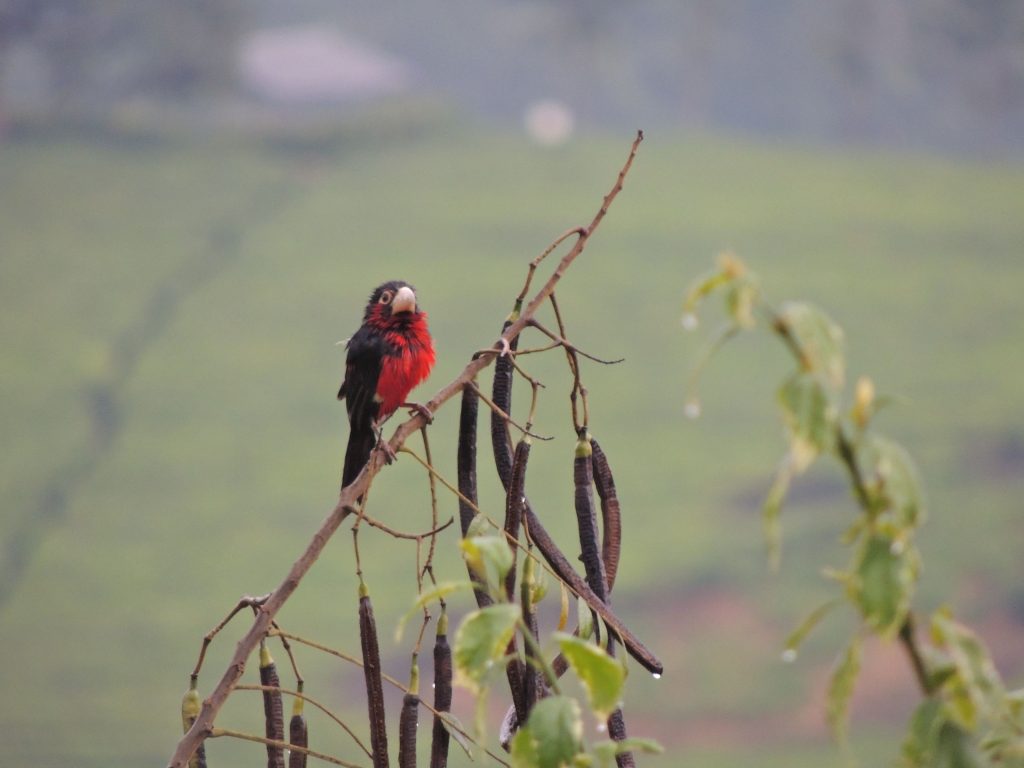
We encountered several monkey species today too, including Grey-cheeked Mangaby, Red-tailed Monkey, a quite rare Red Colobus, and several Olive Baboons.
Towards the end of our walk we found a most peculiar bird, an Eastern Grey Plantain-eater. I was absolutely captivated by the improbable size and heft of this bird. Perhaps I should have guessed that it’s related to turacos. My book describes them and the closely related Go-Away-Birds as “….open country relatives of turacos”. None is as showy as any of the turacos but they have presence.
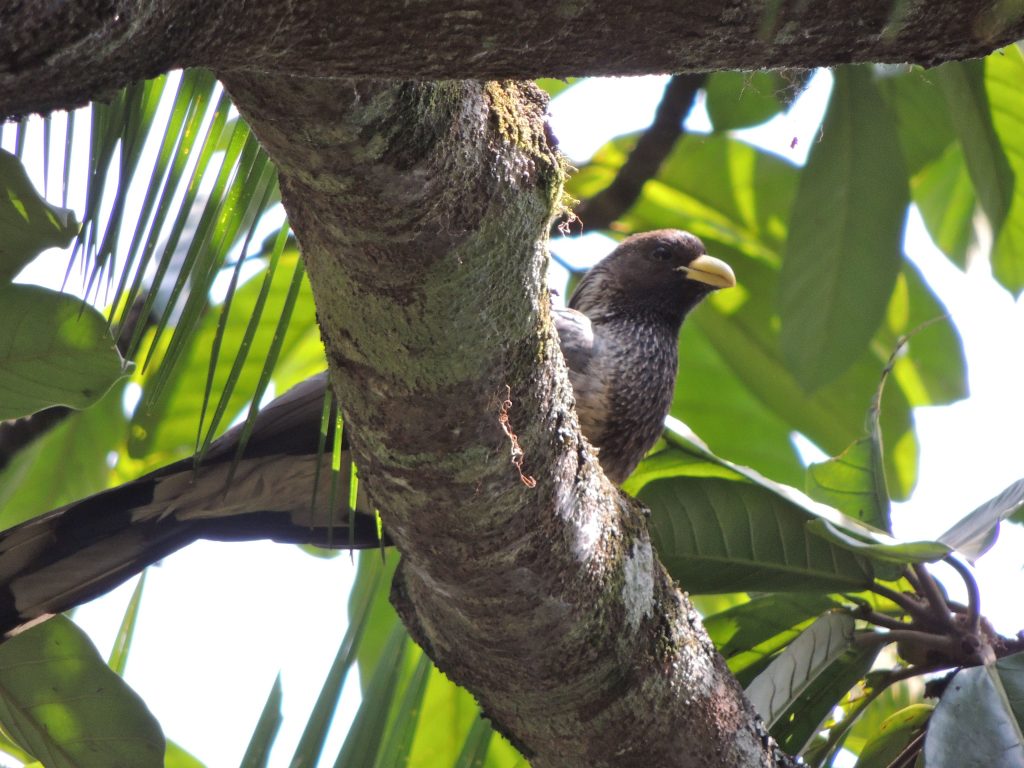
I assumed that the evident ho-hum lack of interest in the Plantain-eater exhibited by both Robert and Gerald was because, in this land of dramatic animals, it is really just a big grey lump of a bird – you could look at it that way. I shrugged, each to his own, I thought and continued to admire it until it flew.
Well, almost five weeks later, I came to understand their point of view. Eastern Grey Plantain-eaters are bog-common around cultivation and gardens – at least I saw many of them around Entebbe in the days before flying home. They are hard to miss and have a raucous cry that degenerates into a sort of cascading maniacal laugh. You might easily tire of them.
